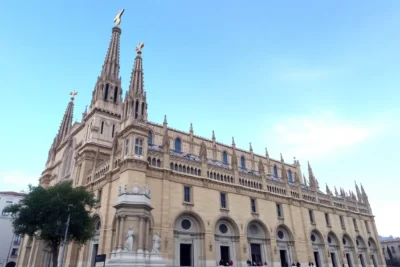
Antoni Gaudí's masterpiece, the Sagrada Familia, stands as a testament to the innovative spirit of Modernist architecture. This iconic basilica, still under construction, combines natural forms with imaginative designs, captivating visitors from around the globe.
In exploring Gaudí's Sagrada Familia: Iconic Modernist Architecture, one discovers a unique blend of symbolism and spirituality that reflects Gaudí's deep faith and artistic vision. Each intricate detail serves a purpose, making this architectural wonder a living representation of his genius.
Gaudí's Sagrada Familia: A Masterpiece of Modernist Architecture
Gaudí's Sagrada Familia is not merely an architectural structure; it is a symbol of cultural identity for Barcelona and an emblem of the Modernist movement. Its design intricately intertwines with the natural world, showcasing organic shapes and vibrant colors that draw heavily on the forms found in nature. This innovative approach to architecture sets Sagrada Familia apart as a visionary work that challenges traditional building concepts.
The basilica is characterized by its rich symbolism, which is reflected in various elements, such as:
- Facades that narrate the life of Christ, including the Nativity and Passion facades.
- Towers representing the twelve apostles, the Virgin Mary, and Jesus Christ.
- Stained glass windows that create a mystical ambiance through the play of light and color.
Beyond its aesthetic appeal, Gaudí's Sagrada Familia serves as a prime example of engineering innovation. Utilizing hyperboloid structures and parabolic arches, Gaudí employed cutting-edge techniques for his time, allowing for both stability and beauty. This mastery of form and function is evident in:
| Feature | Traditional Architecture | Gaudí's Approach |
|---|---|---|
| Structural Support | Load-bearing walls | Freestanding columns |
| Design Inspiration | Geometric forms | Natural elements |
| Light Utilization | Static windows | Dynamically colored stained glass |
As the Sagrada Familia continues to evolve, it remains a living testament to Gaudí's vision. His unwavering dedication to craftsmanship and creativity ensures that this masterpiece not only captures the essence of Modernist architecture but also inspires future generations of architects and artists alike.
The Architectural Significance of Gaudí's Sagrada Familia
The architectural significance of Gaudí's Sagrada Familia lies in its ability to transcend conventional design principles. Gaudí seamlessly integrated natural forms into his work, drawing inspiration from organic shapes found in the environment. This approach not only enhances the aesthetic experience but also creates a harmonious relationship between the building and its surroundings, making the basilica a quintessential representation of Modernist architecture.
One of the most notable aspects of the Sagrada Familia is its innovative use of geometry. The temple incorporates a variety of forms, including hyperboloids, paraboloids, and spirals, which contribute to its unique silhouette. These shapes are not merely decorative; they serve functional purposes, enhancing structural integrity while allowing for expansive interior spaces filled with natural light. The design embodies Gaudí's belief that architecture should reflect the beauty of nature.
Moreover, the Sagrada Familia showcases a deep symbolic narrative woven throughout its architecture. Each facade tells a different story, from the Nativity to the Passion, inviting viewers to engage with the spiritual journey of Christ. This narrative complexity sets the Sagrada Familia apart, making it more than just a building; it is a visual scripture that embodies Gaudí's profound faith and artistic commitment.
Lastly, the ongoing construction of the Sagrada Familia serves as a testament to its architectural significance. As techniques and materials evolve, Gaudí's vision continues to inspire contemporary architects. The basilica not only stands as a tribute to Modernist ideals but also as a living laboratory for innovative building practices, ensuring its relevance in the ever-changing landscape of architecture.
Exploring the Iconic Features of Sagrada Familia
The Sagrada Familia is renowned for its extraordinary play of light and color, achieved through its stunning stained glass windows. These windows not only filter natural light into the interior but also create a vibrant atmosphere that changes throughout the day. Key features include:
- Color Gradation: The windows transition from cool blues to warm reds, reflecting different times of the day.
- Symbolic Colors: Each color scheme is meticulously chosen to represent various aspects of faith and spirituality.
- Light Interaction: The interplay of light enhances the emotional experience for visitors, making each visit unique.
Another iconic feature of the Sagrada Familia is its towering spires, which reach impressive heights that symbolize both earthly and heavenly aspirations. These spires are designed to evoke a sense of upward movement, drawing the eyes of onlookers skyward. The architectural significance includes:
- Number of Spires: A total of 18 towers, representing the apostles, Virgin Mary, and Jesus Christ.
- Height Variation: Each spire varies in height, symbolizing different biblical figures and their significance.
- Structural Innovation: Each spire employs advanced engineering techniques to ensure stability while maintaining elegance.
The Sagrada Familia also features intricate facades that tell a comprehensive story of Christ's life, inviting contemplation and reflection. Each facade serves a distinct narrative purpose, enhancing the spiritual experience. Highlights include:
- Narrative Elements: The Nativity facade celebrates Christ's birth, while the Passion facade depicts his crucifixion.
- Artistic Detail: Each facade includes sculptures and carvings that convey deep theological meanings.
- Visitor Engagement: The storytelling aspect encourages visitors to explore and reflect on the biblical narratives.
In summary, the Sagrada Familia is a masterpiece that embodies the essence of Modernist architecture through its iconic features. From the mesmerizing stained glass windows to the towering spires and narrative facades, each element contributes to an unparalleled experience that resonates with both architectural beauty and spiritual significance.
The Religious Symbolism Behind Gaudí's Sagrada Familia
The Sagrada Familia is not just an architectural marvel; it is a profound expression of religious symbolism. Every element of its design serves to convey a message of faith, making it a visual representation of Catholic theology. Gaudí believed that architecture could speak to the divine, and through his meticulous work, he sought to create a space that invites spiritual contemplation.
Central to the basilica's design is the concept of light as a manifestation of the divine. The strategic placement of stained glass windows allows natural light to flood the interior, illuminating the space with vibrant colors that shift throughout the day. This interplay of light symbolizes the presence of God and enhances the spiritual experience for visitors, encouraging reflection and prayer.
Moreover, the façades of the Sagrada Familia are rich with narrative elements that depict key moments in Christ’s life. Each façade—such as the Nativity and Passion—serves as a catechism for the faithful, inviting viewers to engage with the stories of redemption and sacrifice. This profound storytelling approach transforms the basilica into a living scripture, making the architecture itself a form of worship.
Finally, the towering spires of the Sagrada Familia represent a connection between heaven and earth. These spires, reaching for the sky, symbolize the aspiration of humankind to ascend towards the divine. Each spire is dedicated to different biblical figures, further enriching the spiritual narrative and creating a sacred skyline that inspires awe and reverence.
Preservation and Ongoing Construction of Sagrada Familia
The preservation and ongoing construction of the Sagrada Familia is a remarkable endeavor that highlights both the challenges and triumphs of maintaining Gaudí's vision. As of now, the basilica is projected to be completed by 2026, coinciding with the centenary of Gaudí's death. This timeline reflects the complex nature of the project, which involves intricate craftsmanship and the use of advanced technologies to stay true to Gaudí's original designs.
In recent years, significant advancements in building technology have greatly aided in the ongoing construction of the Sagrada Familia. These innovations have allowed for:
- Efficient Material Use: Modern materials enhance durability while preserving aesthetic integrity.
- 3D Modeling: High-tech modeling techniques ensure accuracy in replicating Gaudí's complex geometries.
- Sustainable Practices: Eco-friendly approaches minimize environmental impact during construction.
Moreover, the preservation efforts focus not only on completing the basilica but also on maintaining existing structures. Regular conservation work is essential to protect the intricate details and natural stone from weathering and pollution. The ongoing commitment to preservation underscores the cultural significance of the Sagrada Familia as a UNESCO World Heritage site.
As construction progresses, the collaboration between artisans, architects, and engineers reflects a deep respect for Gaudí's legacy. This collective effort represents a unique blend of traditional craftsmanship and modern techniques, ensuring that the Sagrada Familia remains a vibrant symbol of innovation and spirituality for future generations.
Visiting Sagrada Familia: Tips for an Unforgettable Experience
Visiting the Sagrada Familia can be a breathtaking experience, but to make the most of your trip, it's essential to plan ahead. Consider purchasing your tickets online to avoid long queues, especially during peak tourist seasons. This simple step can save you precious time, allowing you to immerse yourself in the architectural wonders of Gaudí's masterpiece without distractions.
To enhance your visit, consider joining a guided tour. A knowledgeable guide can provide insights into the intricacies of the basilica's design and the profound symbolism behind its features. Additionally, explore the option of audio guides or mobile apps that offer detailed descriptions and historical context, ensuring you grasp the full significance of the details around you.
While at the Sagrada Familia, take your time to appreciate the stunning stained glass windows and the interplay of light they create within the interior. To truly relish this experience, try to visit at different times of the day. The sunlight streaming through the glass changes throughout the day, producing a mesmerizing spectacle that enhances the spiritual atmosphere of the basilica.
Finally, don’t forget to explore the surrounding areas. The parks and plazas around the Sagrada Familia provide excellent vantage points for photography and reflection. Consider a leisurely stroll through nearby streets to discover additional works by Gaudí and local shops offering unique souvenirs. Embracing the neighborhood will enrich your experience and deepen your understanding of Barcelona's vibrant culture.
 Best time to visit Casa Batlló: Spring or Fall & Early/Late hours to avoid crowds.
Best time to visit Casa Batlló: Spring or Fall & Early/Late hours to avoid crowds.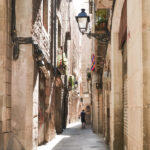 Explore the Gothic Quarter's narrow streets
Explore the Gothic Quarter's narrow streets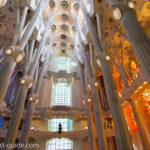 Best Ways to Get to Barcelona Port from La Sagrada Familia
Best Ways to Get to Barcelona Port from La Sagrada FamiliaIf you want to know other articles similar to Gaudí's Sagrada Familia: Iconic Modernist Architecture you can visit the category Sagrada Familia.
Leave a Reply

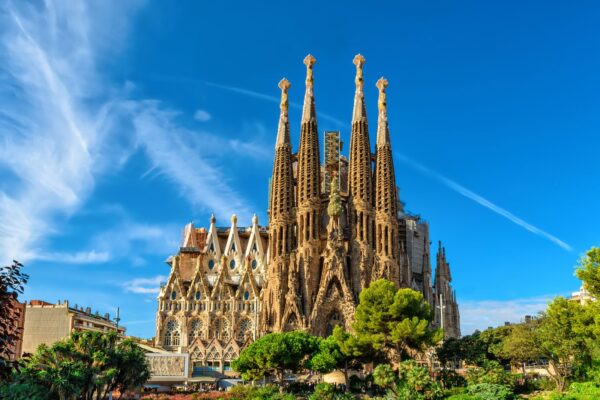
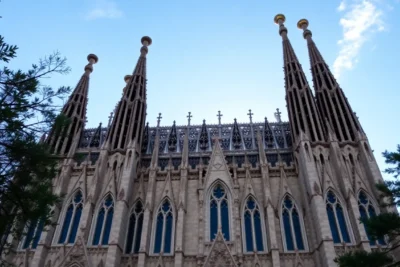
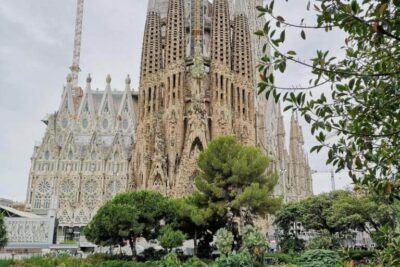
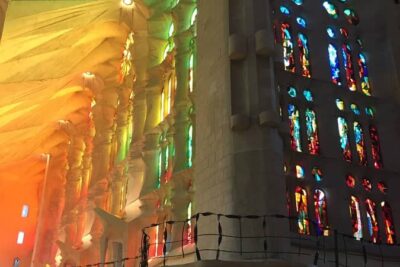
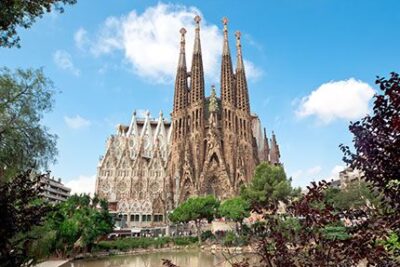
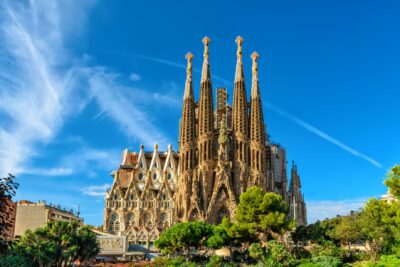
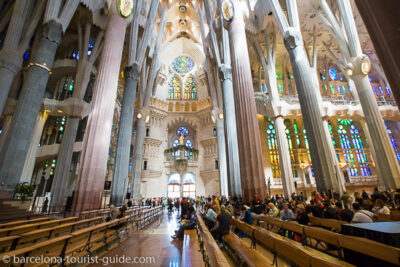
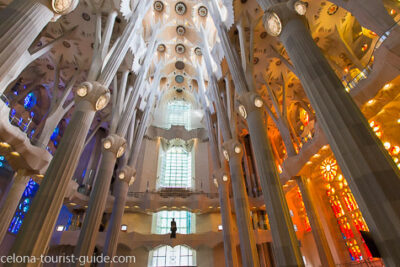
Read more!